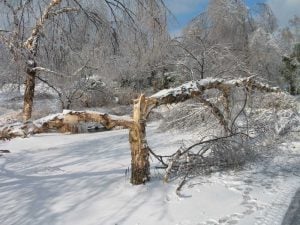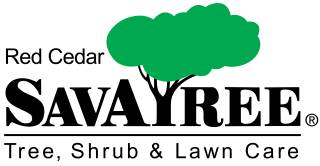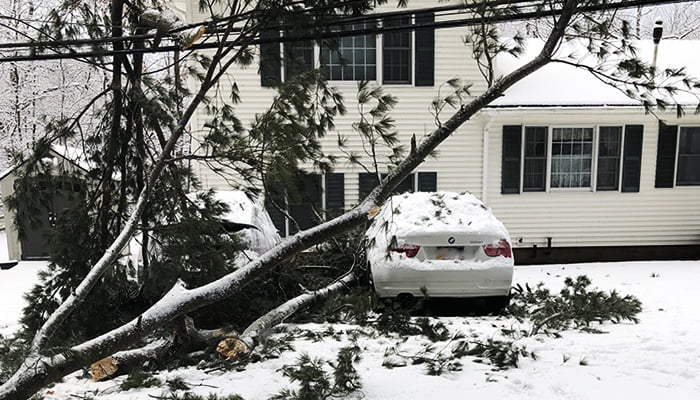A Bombogenesis refers to a rapidly intensifying area of low pressure classified as a “weather bomb”. To be classified as a “weather bomb” the central pressure of the low-pressure system must drop at least 24 millibars within 24 hours. Winter Storm Grayson, will undergo a Bombogenesis off of the eastern seaboard. As the system continues to strengthen we could see wind gusts of over 50 MPH.
Downed trees have already been reported in New York and CT. With such extreme winds and heavy snowfall, tree breakage and/or downed trees are likely. Trees that are weak prior to a storm are more susceptible to winter breakage with the added weight of snow accumulation and/or severe winds. If a tree falls on your home or on power lines near your home it is extremely important to call the professionals immediately.
There is more to dealing with storm-damaged trees than simply cutting them down with a chainsaw. Because of this, it is key that you hire a certified arborist like those at Red Cedar to accurately determine the best course of action for your tree care.
There are six main types of tree storm damages:
- Blown over
- Stem failure
- Crown twist
- Root failure
- Branch failure
- Lightning strike
In addition to the high accumulation of snow, varying temperatures also increase the chance of ice buildup, due to melting and refreezing. This further adds to the addition of weight and pressure put on your trees. The pressure of storm winds can result in other tree damages as well like crown twist and uprooted trees.
DIY storm damaged tree removal can be extremely dangerous because taking a chainsaw to a tree blindly can cause dangerous results. It is not always evident where the tension of a broken tree is. In fact, the most dangerous and difficult trees to cut are those that have been damaged by storms and here’s why:
- They are unpredictable because of the large amount of compression and tension forces coming from the tree that is under such pressure. Release cuts need to be made correctly to ensure safety and avoid injury.
- It is important to never straddle the trunk of an uprooted tree while cutting.
- What may look like a simple cut could quickly turn into the tree falling in a way, or spot that you would have never expected (causing damages or harm to you or your surrounding property). It could also cause kickback of the chainsaw, resulting in serious consequences.
- If your tree has fallen on or near a utility line, do not approach, call your utility company immediately.
- If your tree has fallen on your home, do not approach or attempt removal, call us immediately.
Following Storm Grayson and the Bombogenesis, if the trees on your property have been uprooted, damaged, or broken, please do not attempt removal or cleanup on your own. With such unpredictable and potentially dangerous conditions, it is best to call the trained professionals. Storm damaged trees can be very challenging to remove and require specific training and knowledge to ensure safe removal and or re-stabilizing. It’s also a good idea to have an inspection done following a large storm even if there aren’t visible damages because some weaknesses and/or storm damages are not always visible to the untrained eye. If there was a weakness created by Storm Grayson and the Bombogenesis, breakage may be much more likely next storm. Call Red Cedar Arborists for any Bombogenesis damages or needed tree removal services. Stay safe!


